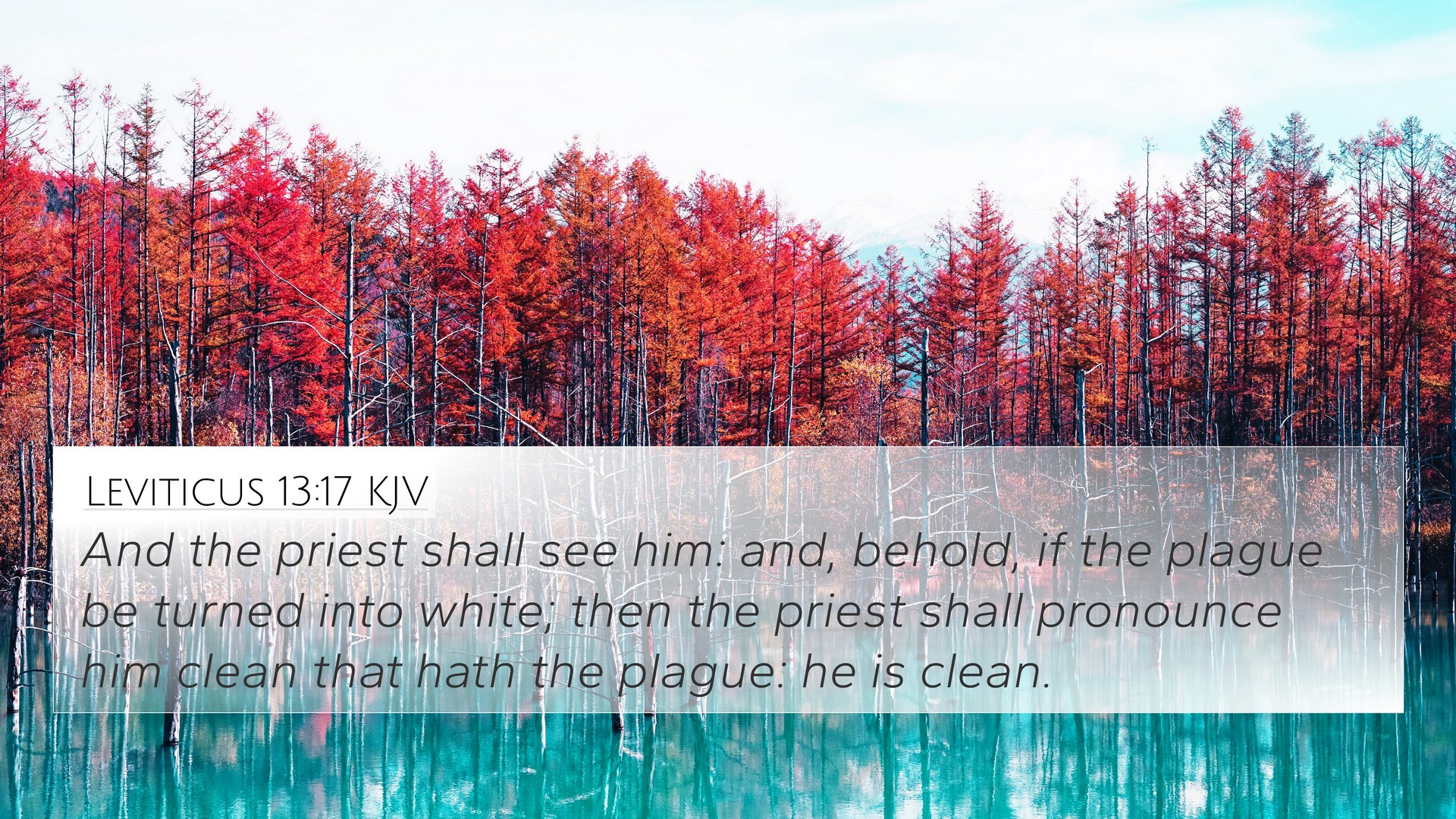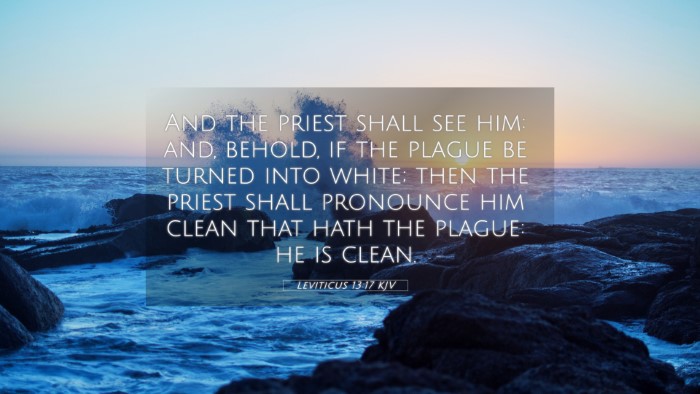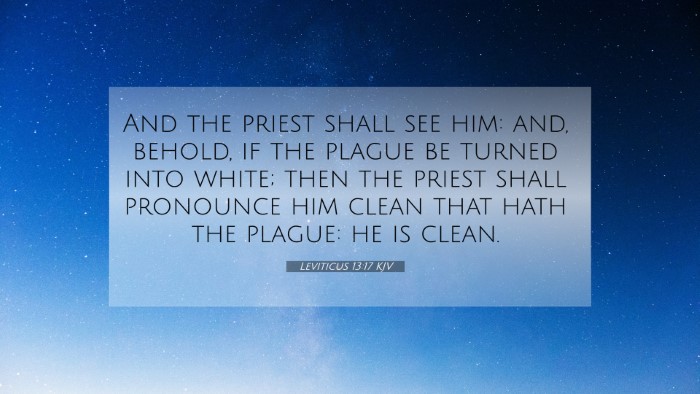Understanding Leviticus 13:17
Verse: "And the priest shall look upon it: and, behold, if the hair in the bright spot be turned white, and it be in sight deeper than the skin; it is a leprosy broken out of the burning: wherefore the priest shall pronounce him unclean: it is the plague of leprosy."
Verse Meaning and Interpretation
Leviticus 13:17 addresses the assessment of skin conditions by the priest, specifically focusing on what is labeled as ‘leprosy’ in biblical texts. This procedure illustrates the significant role of the priest within the community, acting as a mediator between God and the people, particularly concerning issues of health and ritual purity.
Summary from Biblical Commentaries
Matthew Henry: In his commentary, Henry emphasizes the authority given to the priest in diagnosing leprosy, which symbolizes sin and its consequences. The priest's examination reflects an understanding of ‘inside out’ purity. He notes that the transformation of hair to white signifies a deeper spiritual meaning about the emergence of sin and its visualization in one's physical state.
Albert Barnes: Barnes highlights the importance of the visible signs of leprosy as a representation of spiritual decay. He points out that the diagnosis is not merely medical but serves a broader purpose of maintaining community holiness and emphasizing the seriousness of sin. The white hair and deeper skin would connect to God's judgment on sinfulness.
Adam Clarke: Clarke elaborates on the symbolic aspect of the white hair representing purity after being tested. He notes that this verse illustrates the transition from the visible condition to the outcome of being declared unclean, drawing a parallel to the spiritual life where visible actions reflect one's inner state regarding sin and righteousness.
Key Connections and Cross-References
This verse can be better understood through various cross-references throughout the Bible. Here are 10 related passages that share thematic elements with Leviticus 13:17:
- Leviticus 13:2-3: Discusses the initial examination by the priest.
- Leviticus 14:1-7: Details the purification process after recovery from leprosy.
- Numbers 12:10: Relates to Miriam's leprosy and the judgment of God on sin.
- Matthew 8:2-3: Shows Jesus healing a leper, reinforcing the theme of purity and restoration.
- Mark 1:40-42: Another account of Jesus cleansing a leper, emphasizing compassion and authority over illness.
- Luke 17:12-14: The ten lepers healed and the acknowledgment of faith through action.
- 1 John 1:9: Encouragement of confession, bearing a tie to spiritual cleansing equivalent to physical purification.
- James 5:14: Instruction regarding prayer for the sick, echoing the communal responsibility seen in Leviticus.
- Hebrews 13:12: Links the concept of suffering and identification with Christ's sacrifice outside the camp.
- 1 Peter 2:24: Addresses healing and Christ's role in taking our sins, a fundamental theme of atonement.
Tools for Cross-Referencing
Understanding cross-references can greatly enhance biblical study. Below are useful tools and methods:
- Bible Concordance: A resource to find specific words and related verses for deeper study.
- Bible Cross-Reference Guide: Guides to help find connections between passages and themes.
- Cross-reference Bible Study: Methods to engage more deeply with Scripture through thematic analysis.
- Comprehensive Bible Cross-Reference Materials: Books and digital tools that exhaustively detail relational scripture passages.
Conclusion
Leviticus 13:17 serves as a profound reminder of the intersection between physical states and spiritual realities. Through the lens of cross-references and biblical commentaries, one can gain insights into the serious nature of sin and the need for divine cleansing, both in the Old Testament context and its fulfillment in the New Testament through Christ.
As you engage with this passage and its surrounding scriptures, consider how they connect and the overarching narrative of God’s desire for holiness and restoration in His people.


